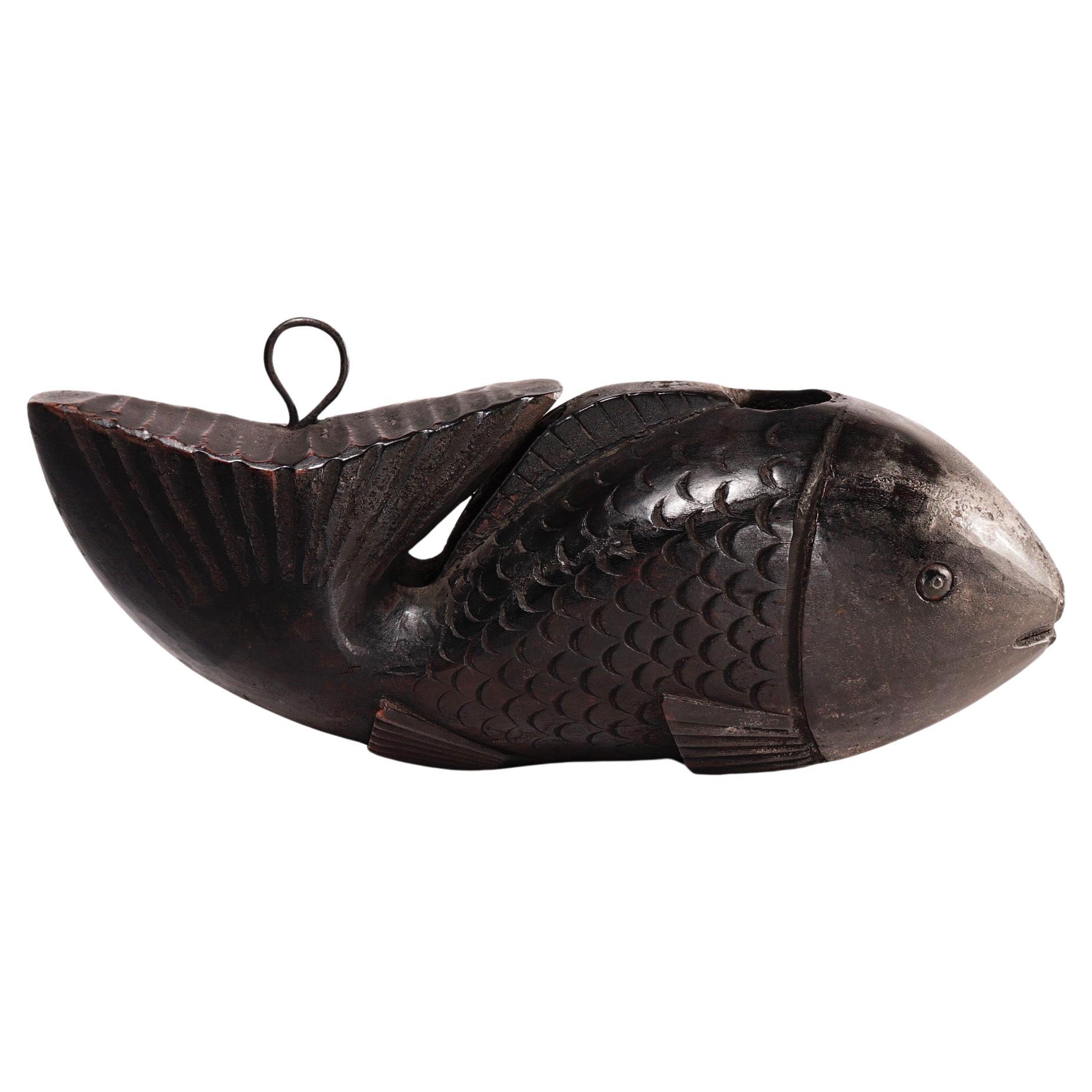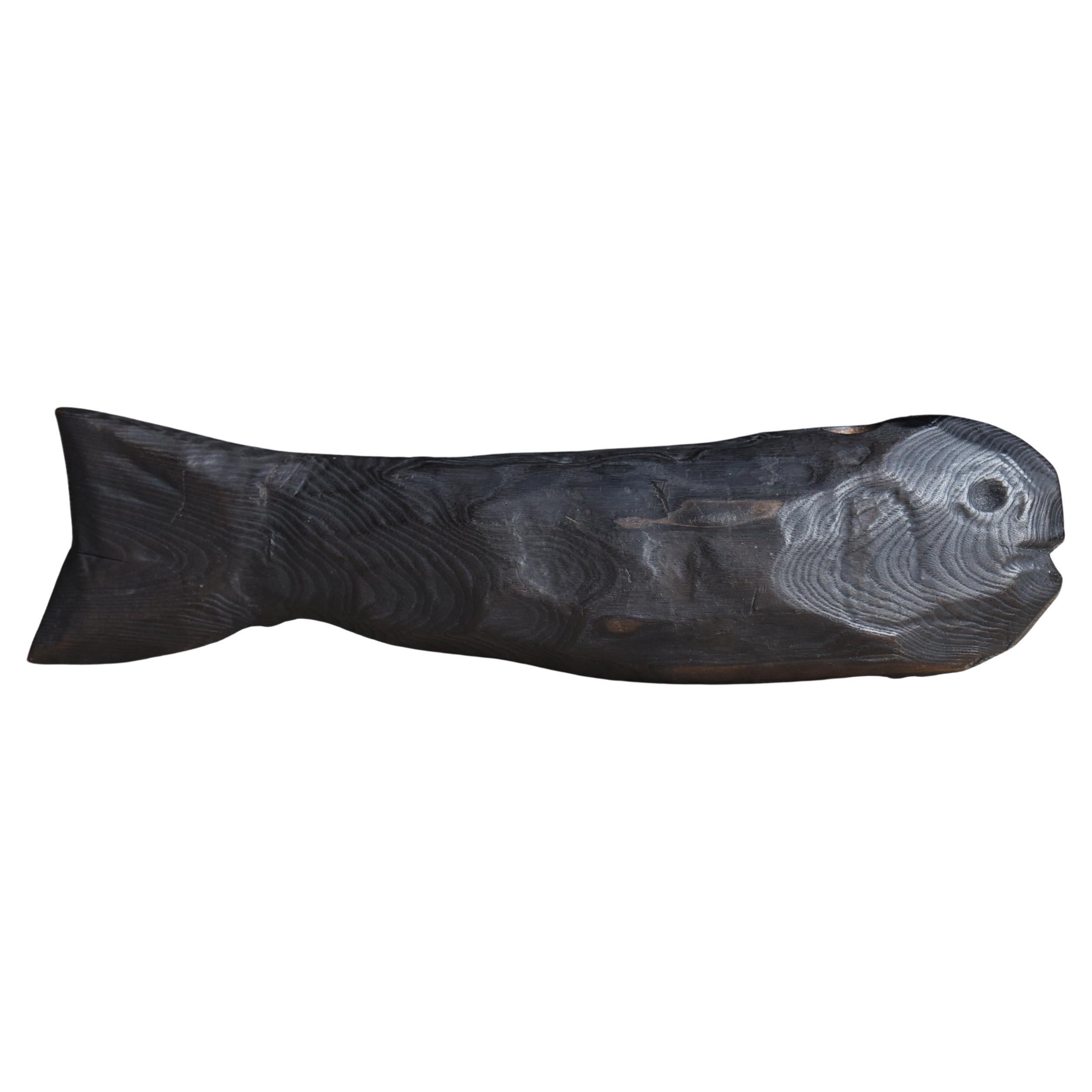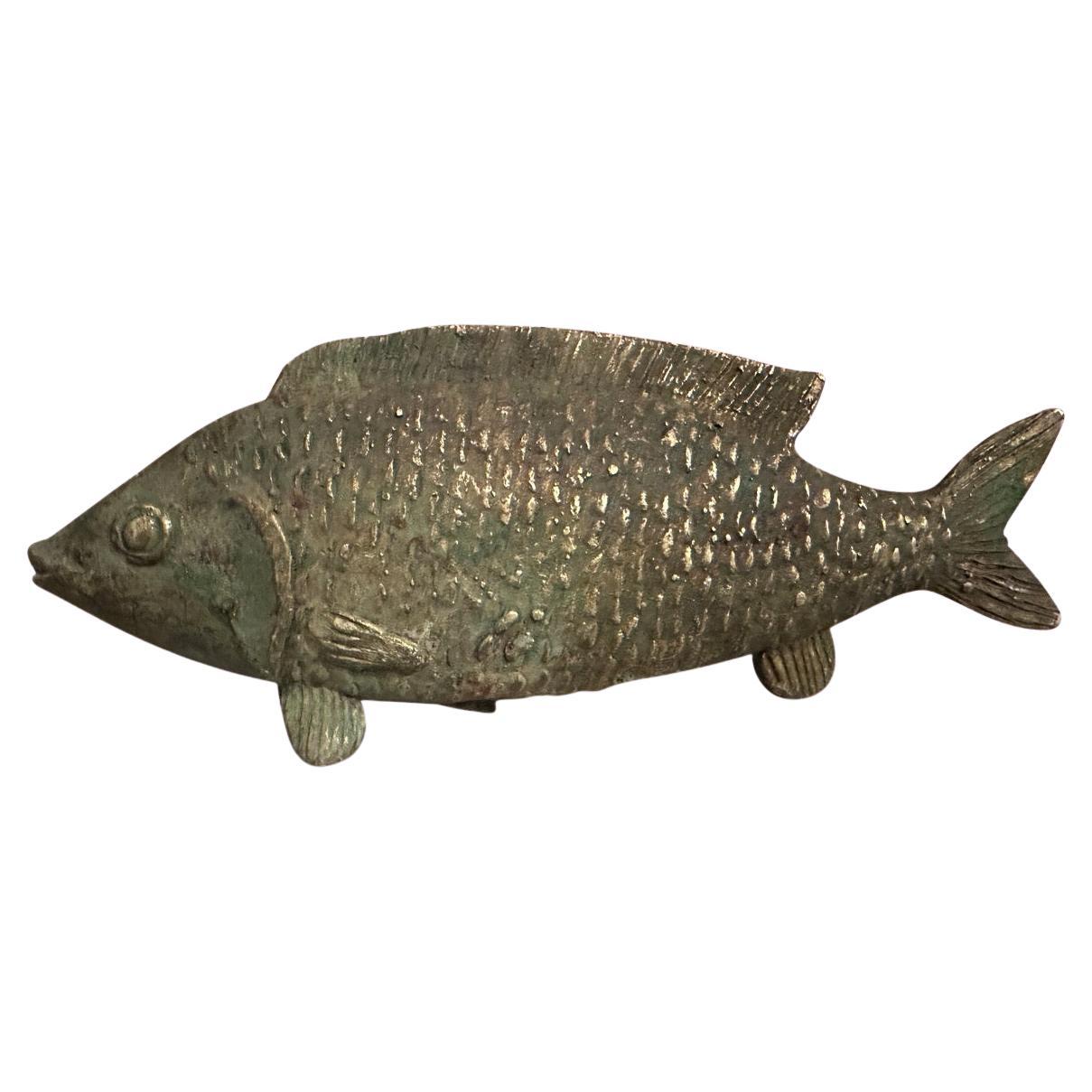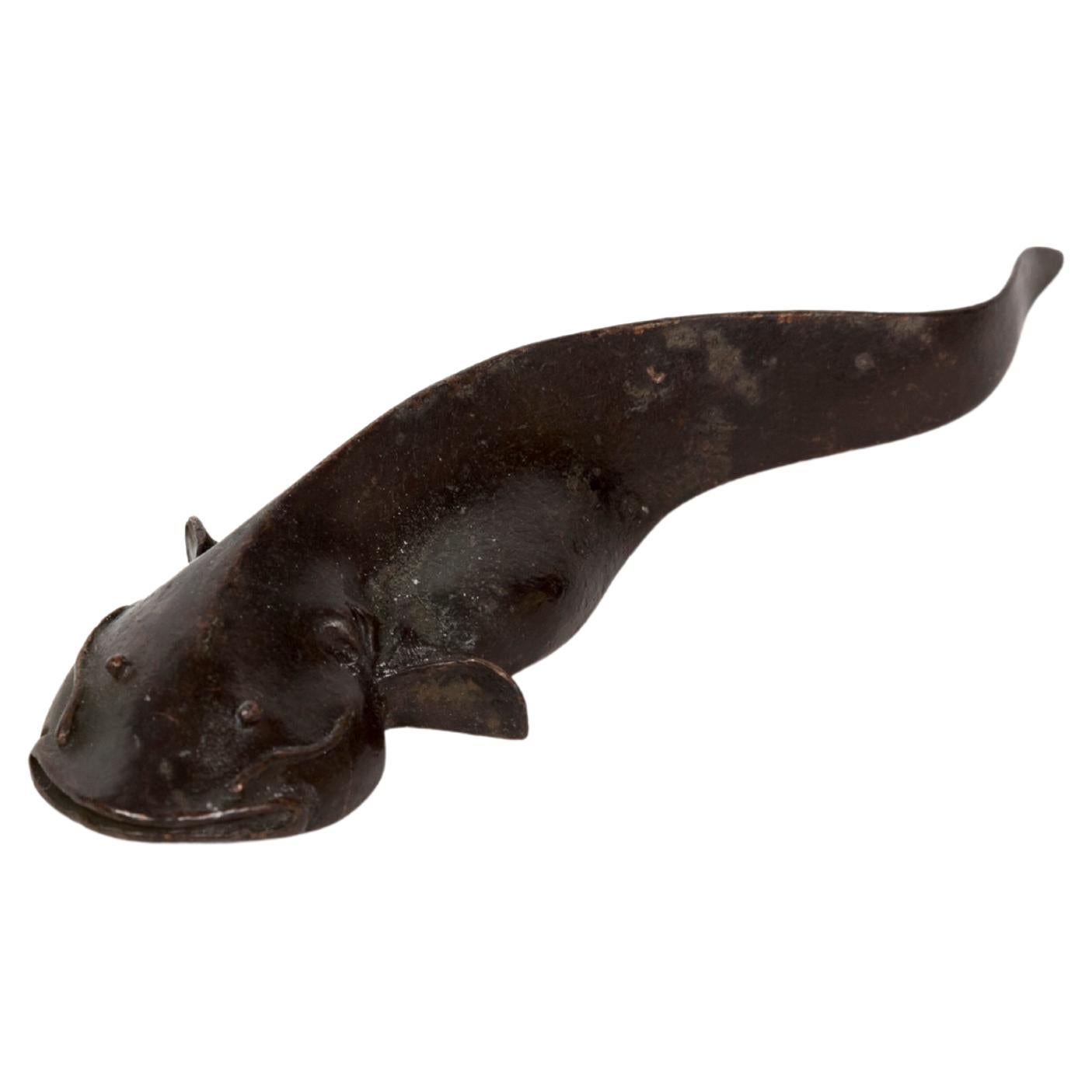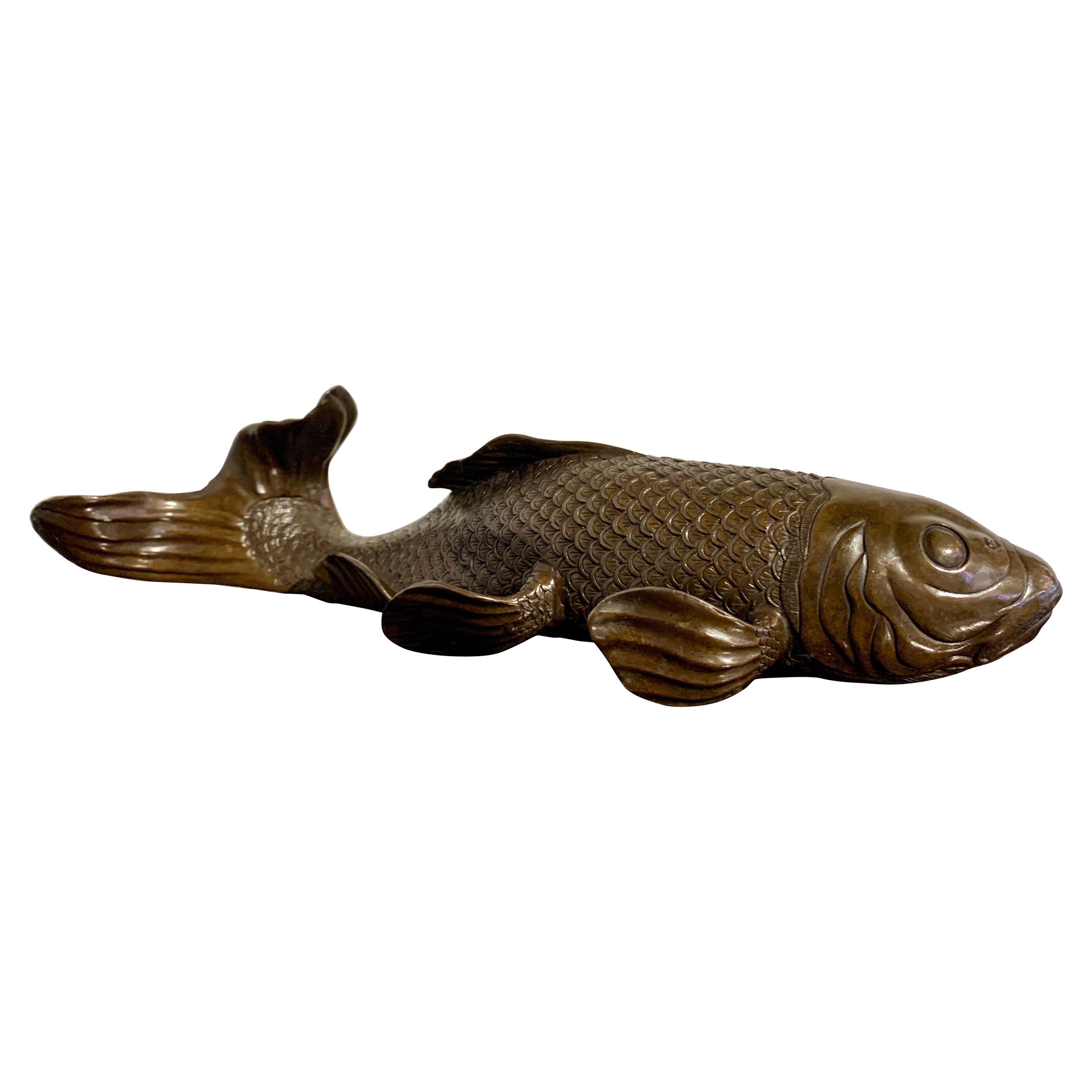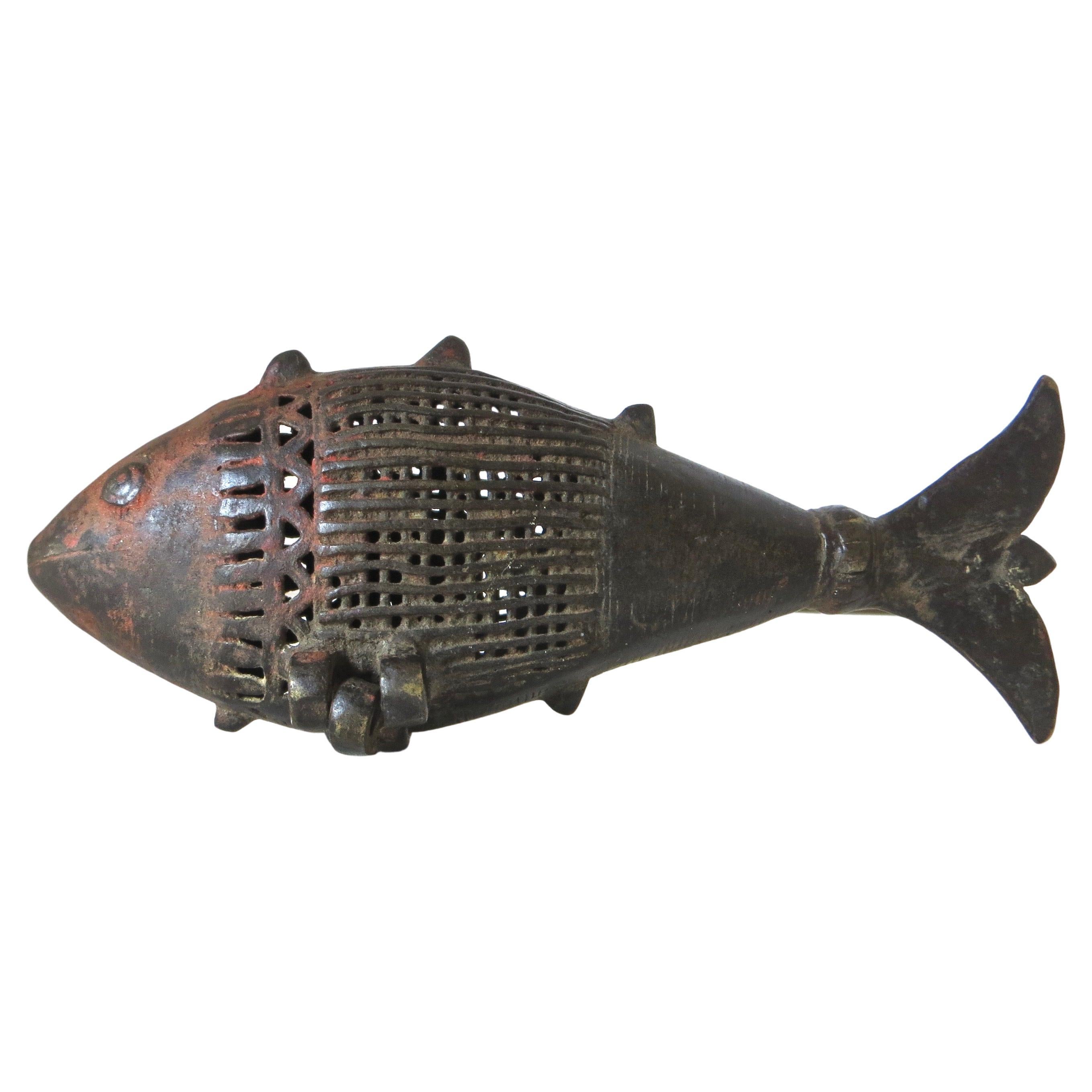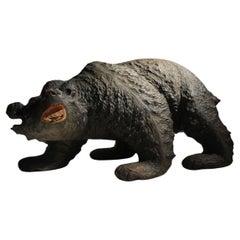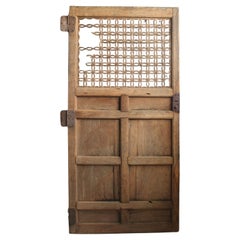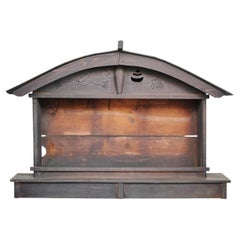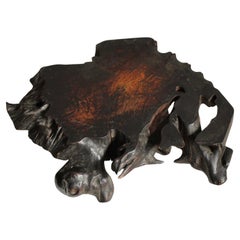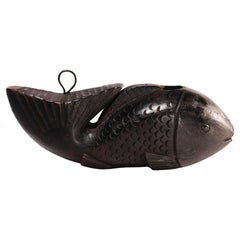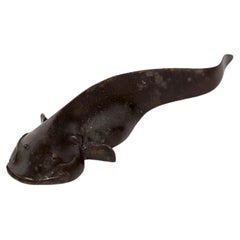Items Similar to Japanese Primitives Antiques : Hearth Tools Fish-shaped wood Hook Farmer Life
Want more images or videos?
Request additional images or videos from the seller
1 of 15
Japanese Primitives Antiques : Hearth Tools Fish-shaped wood Hook Farmer Life
$1,200
£917.46
€1,056.73
CA$1,681.57
A$1,877.31
CHF 983.68
MX$22,980.15
NOK 12,492.79
SEK 11,779.12
DKK 7,886.51
About the Item
A tool used to hang a kettle from the ceiling above a hearth is called a Jizai-kagi(自在鉤).
This is a part called a Yokogi(横木) that is used to adjust the length of the hook.
It has been smoked for many years to create this look.
A tool used in rural Japan.
It can also be considered a Japanese primitive.
The amateur carving adds depth to the flavor, and the beauty of the wood is captivating.
Among them, I came across a particularly cute Yokogi.
It makes you wonder how long it took to smoke it to this extent.
The shape is also charming, making it a one-of-a-kind old folk art.
Material: Wood
*Soot may fall off and there are burnt areas on the main body
- Dimensions:Height: 9.06 in (23 cm)Width: 14.18 in (36 cm)Depth: 5.12 in (13 cm)
- Materials and Techniques:Wood,Woodwork
- Place of Origin:
- Period:
- Date of Manufacture:Edo-Meiji era
- Condition:Wear consistent with age and use. Minor structural damages. Minor fading.
- Seller Location:Niiza, JP
- Reference Number:1stDibs: LU10264243609552
About the Seller
No Reviews Yet
Vetted Professional Seller
Every seller passes strict standards for authenticity and reliability
Established in 2012
1stDibs seller since 2025
7 sales on 1stDibs
Typical response time: 7 hours
- ShippingRetrieving quote...Shipping from: Niiza, Japan
- Return Policy
Authenticity Guarantee
In the unlikely event there’s an issue with an item’s authenticity, contact us within 1 year for a full refund. DetailsMoney-Back Guarantee
If your item is not as described, is damaged in transit, or does not arrive, contact us within 7 days for a full refund. Details24-Hour Cancellation
You have a 24-hour grace period in which to reconsider your purchase, with no questions asked.Vetted Professional Sellers
Our world-class sellers must adhere to strict standards for service and quality, maintaining the integrity of our listings.Price-Match Guarantee
If you find that a seller listed the same item for a lower price elsewhere, we’ll match it.Trusted Global Delivery
Our best-in-class carrier network provides specialized shipping options worldwide, including custom delivery.More From This Seller
View AllOld Japanese Hokkaido Folk Crafts Large Wood Carving Bear
Located in Niiza, JP
Wood carving The material is unknown, but it is said to be linden
950(W)× 440(H) × 420(D) [mm] 25kg
Estimate Packing Dimensions(Packaged in plywood and wooden frame)
56 CM × 105 CM ×...
Category
20th Century Japanese Sculptures and Carvings
Materials
Wood
D4 Japanese Antiques, door, fittings, Temple fittings, Zelkova, Kumiko design
Located in Niiza, JP
Material: Zelkova Keyaki wood, iron
Size: Width 850 x Height 1750 x Depth 40 mm weight 20 kg
Packaging (4-5 mm thick plywood sandwiched): 10 cm x 93 cm x 188 cm, weight 32 kg
It is...
Category
Antique 19th Century Japanese Antiquities
Materials
Wood
Japanese Antiques Primitive Art wood Shrine for Buddhist statues
Located in Niiza, JP
1200(W)× 860(H) × 250(D) [mm] 10kg
A soot-covered shrine thought to be from the Edo period
It is for home use and very simple
Even so, it is much larger than normal
There are no Bud...
Category
Antique 18th Century Japanese Antiquities
Materials
Wood
Japanese Antiques Tree Stand / table Wabisabi Primitive Stool
Located in Niiza, JP
650(W)× 210(H) × 580(D) [mm]
10kg
Material unknown
A beautiful, well-balanced tree with natural roots
The legs are artificially shaped, but the legs and the tree are carved from a s...
Category
Antique 19th Century Japanese Antiquities
Materials
Wood
Old Japanese Classical techniques, Kumiko wall hanging by joiner
Located in Niiza, JP
Various designs Kumiko wall hanging by joiner
1220(W)× 600(H) × 45(D) [mm] 5㎏
Estimated size after packaging (sandwiched with 5mm plywood):
75 CM x 140 CM x 10 CM Weight 25 KG
Mate...
Category
21st Century and Contemporary Japanese Sculptures and Carvings
Materials
Wood
Japanese Antiques primitive Japanese oak a wooden frame for hearth
Located in Niiza, JP
Wood: Japanese oak
a wooden frame for hearth
φ880× 50 (thickness) [mm] 12kg
In ancient Japan, people gathered around the hearth to eat and other things
It would also look great as a...
Category
Antique 18th Century Japanese Antiquities
Materials
Wood
You May Also Like
Antique Japanese Mingei Yokogi
Located in Point Richmond, CA
Antique Japanese Yokogi, a fish shaped fulcrum for the pot hook assembly over the hearth, a naively carved Tai (Sea Bream) with large head pierced for the hooked pole and the large tail pointed upward with a metal loop for the cord attachment, incised carving for facial details and scales, encrusted patina from use. Wood storage box made of hinoki.
Excellent condition.
5-7/8 in. high x 14-3/4 in. long x 4 in. wide.
Weight: 4 lbs. 4 oz.
Late Edo, Circa 1800.
Published in a Japanese newspaper in 1964 (article and translation available).
Provenance:
with Kingo Kondo, Kyoto 1964
Ken Domon...
Category
Antique Early 1800s Japanese Edo Sculptures and Carvings
Materials
Wood
Japanese Antique Wood Carving Fish 1860s-1900s / Figurine Object Wabisabi
Located in Chōsei District Nagara, JP
This is an old carved wooden fish made in Japan.
It was made during the Meiji period (1860s-1900s) and was carefully carved one by one using chestnut wood. The annual ring pattern th...
Category
Early 20th Century Japanese Meiji Sculptures and Carvings
Materials
Chestnut
Vintage African Fish Casting
Located in New York, NY
Charming bronze fish from Africa circa 1960.
Andrianna Shamaris. The Leader In Modern Organic Design.
Category
Vintage 1950s African Organic Modern Animal Sculptures
Materials
Bronze
Bronze okimono sculpture of a catfish or namazu
Located in PARIS, FR
Sculpture or okimono in bronze of a wavy catfish emerging from calm water, scales are not represented, and its expression of eyes and mouth could be considered naive. One other inter...
Category
Early 20th Century Japanese Taisho Metalwork
Materials
Bronze
Japanese Bronze Okimono of a Carp, Taisho Period, Early 20th Century, Japan
Located in Austin, TX
An elegant Japanese cast bronze okimono of a swimming carp, Taisho Period (1912 - 1926), early 20th century, Japan.
The graceful fish portrayed realistically in motion, as if swimmi...
Category
Vintage 1920s Japanese Taisho Sculptures and Carvings
Materials
Bronze
18th Century Qing Dynasty Fish Shaped Cricket Holder
Located in Incline Village, NV
Uniquely fabulous and highly unusual item for those seeking something different; this 18th century "cricket holder" from the Qing Dynasty is in the shape of a fish and is made of hand wrought metal, with nice detail and an open woven body which provided air to the cricket. A sophisticated clasp locking mechanism on the underneath of the fish kept the pet cricket contained in the caged holder. Obviously this was intact when someone at some point in time tried to remove whatever was inside by making a hole at the base of the tail to get it out (see image). This hand held cricket cage holder is in very nice and all original condition, save for the small hole; not fragile in any way; sturdy in structure with no repairs.
For over 1000 years the Chinese have used crickets...
Category
Antique 1790s Chinese Qing Antiquities
Materials
Metal
More Ways To Browse
Wood Japanese Furniture
Antique Woodwork
Japanese Antique Wood
Fish Shaped
Used Hearth
Antique Hearth
Antique Wood Fish
Primitive Japanese
Antique Wood Ceiling
Antique Carving Tools
Antique Japanese Fish
18th Century Art Tools
Antique Woodworking Tools
Japanese Hooks
Japanese Wood Fish
Japanese Kettle
18th Century Kettle
Japanese Jizai
